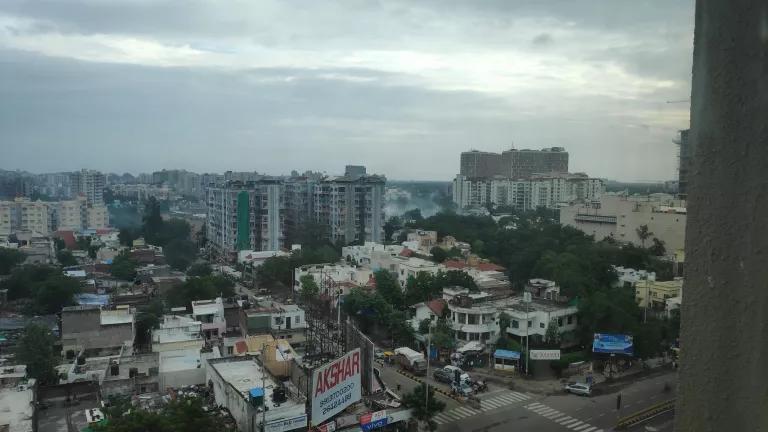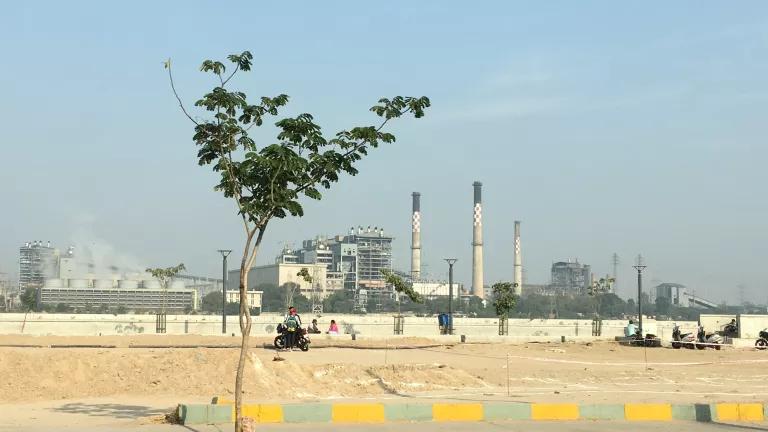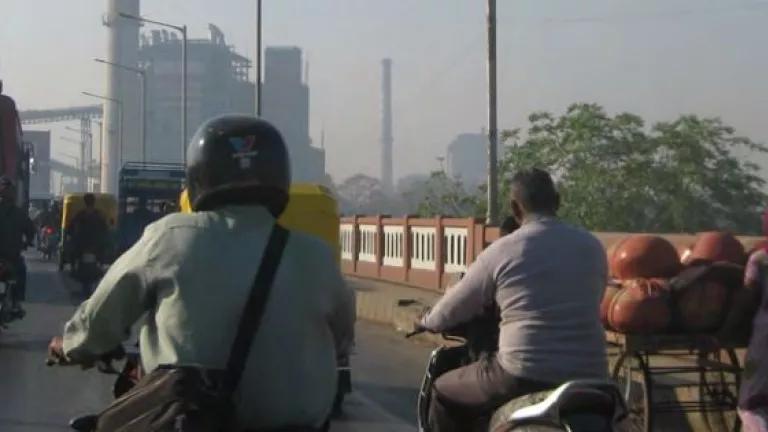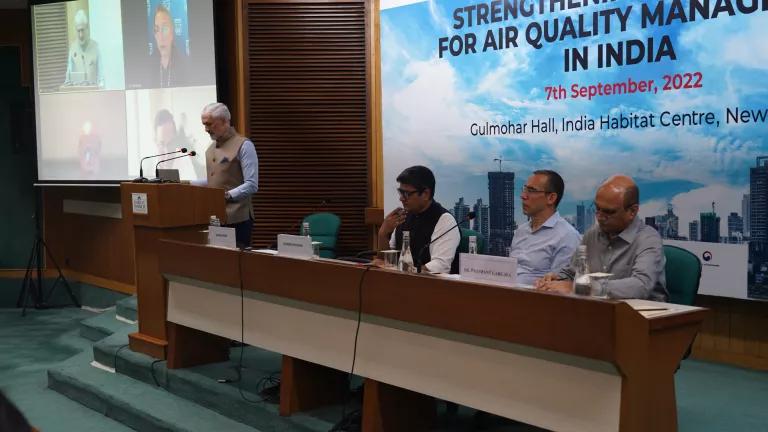
Mr. Shombi Sharpe (UN Resident Coordinator for India) speaks at the roundtable event (Credit: NRDC and iFOREST).
Blog co-authored by Tanvi Gupta and Polash Mukerjee
Air pollution in India is a national challenge: 94 percent of the country’s population is exposed to very poor air quality, and the country has witnessed one of the most dramatic rises in pollution over the last twenty years with its rapid industrialization and continuing reliance on polluting fossil fuels. Of the top twenty cities in the world where pollution has worsened the most dramatically from 2010 to 2019, 18 are in India.
But reducing air pollution in the country is a notoriously complex problem. Spanning political borders and stemming from a range of different sources and industries, outdoor air pollution is a menace to public health and well-being, contributing to an estimated 980,000 premature deaths each year in India. Cleaning up India’s air requires sustained, targeted, and inclusive collaboration amongst stakeholders from all levels government, civil society, and the private sector.
On September 7, 2019, the United Nations declared the first “International Day of Clean Air for Blue Skies.” This year, for the third annual event, the focus was on “The Air We Share” – specifically, the ways in which air pollution harms all people, but especially already-vulnerable communities—and the fact that solutions must rely on integrating efforts across stakeholder communities.
To mark this year’s event, NRDC, iFOREST, the United Nations Environment Program (UNEP) and the World Bank co-organized a roundtable discussion on Strengthening Capacities for Air Quality Management in India. The event, held in Delhi, convened leaders from the national government, states, cities, research institutions and civil society experts to discuss current and upcoming efforts to build capacity to advance an inclusive air quality management agenda. The discussion included sessions on strengthening workforce capacity for implementation and research in air quality management, as well as ways to increase financing available for air quality interventions.
At the event, iFOREST released a new report at the event highlighting the livelihood benefits of expanded air pollution reduction efforts in India, estimating a workforce of 2.2 million air quality-related jobs in this decade (of which about 600,000 jobs would be new positions). Other event speakers also addressed the need to strengthen workforce capacity for air quality management, and the need for air quality managers to work in coordination across traditional sector boundaries and in collaboration with a diverse array of stakeholders. In his opening address, Mr. Shombi Sharp (the UN Resident Coordinator in India) emphasized that air pollution "respects no boundaries.” As such, he said, “Cooperation must take place across boundaries—sub-national, national, and international.” Ms. Dipa Bagai, the country head of NRDC’s India Program, described what this cooperation could build towards: “a massive multi-pronged approach to source-specific interventions.” “Solutions,” she said, “could prioritize air quality and its climate co-benefits. Addressing environmental pollution presents a major opportunity to solve social, health, and economic challenges.”
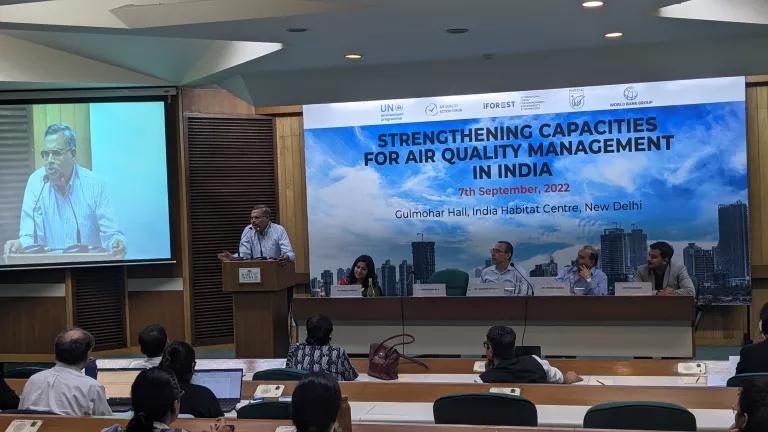
Mr. P. Raghavendra Rao (Chairman, Haryana State Pollution Control Board) speaks during a panel discussion on strategies to strengthen implementation of state and city air quality management (Credit: NRDC and iFOREST).
Workshop speakers returned repeatedly to the interplay between air quality and public health through the day of discussions. NRDC India consultant Polash Mukerjee also spoke on the team’s current work with local experts in India to estimate the city-level health co-benefits of policy actions to address climate change and air pollution. That applied research is connecting experts across climate, energy, land use, air quality, and public health to gauge how efforts to advance climate change mitigation and adaptation in Ahmedabad, India can deliver lifesaving air quality benefits in the near-term.
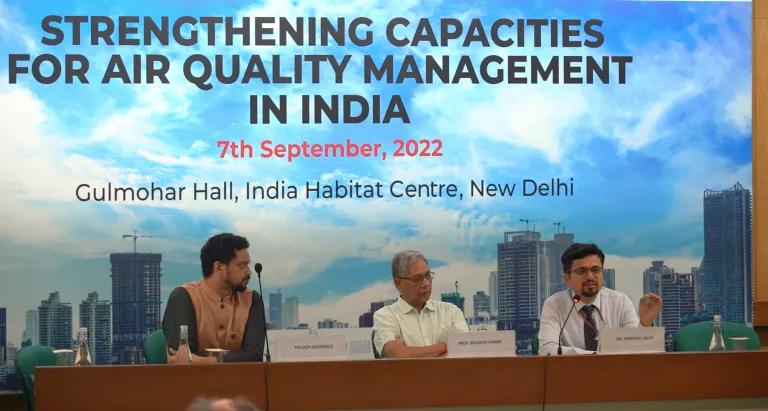
Mr. Polash Mukerjee (NRDC India Program), Prof. Mukesh Khare (Indian Institute of Technology-Delhi) and Dr. Harshal Salve speak at the roundtable event (Credit: NRDC and iFOREST).
As expert voices from panelists representing the Finance Commission of India, the Swiss Development Cooperation, the Deutsche Gesellschaft für Internationale Zusammenarbeit (GIZ), the All-India Institute of Medical Sciences (AIIMS), Indian Institute of Technology (IIT) Delhi and civil society organizations – WRI, CSTEP and CEEW, came together in discussions, the common consensus became clear that building capacity for air quality management could achieve immense benefits for livelihoods and public health. Air pollution is a deadly side effect of climate-changing fossil fuel pollution. As a result, taking steps to implement clean air solutions—improving source controls, strengthening professional capacity, expanding financing mechanisms, and prioritizing transparency and accountability—can deliver clear improvements to the lives of India’s most vulnerable people.


